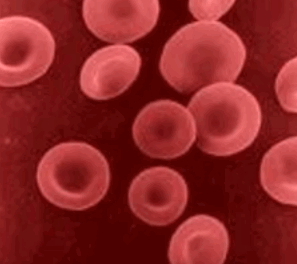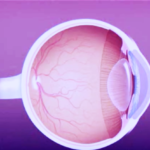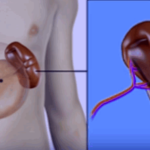When we talk of RDW blood test, it refers to red cell distribution width test, which is a measurement that shows the range in volume and size of red blood cells commonly known as erythrocytes. In body, red blood cells are responsible for moving oxygen from the lungs to each cell in the entire body. The cells of the body need oxygen for their growth, reproduction, and functioning. When you have red blood cells that appear larger than normal, there could be an issue with your health. Red cell distribution width is given other names as Erythrocyte Distribution Width or RDW-SD (standard deviation) test.
In essence, RDW blood test is used to measure the variation in size and volume of red blood cells. Anything that is outside the normal range in volume or width of the red blood cells would indicate that you have a problem with your bodily function something that may interfere with the way oxygen gets to the various parts of the body. You may also want to know that you may have a normal width or volume and size of the erythrocytes but still have a disease in your body.
Normal blood cells have a standard size in diameter ranging from 6 to 8 micrometers (µm). In the event that the cells appear larger, it would give higher values of RDW blood test. This would mean various things including an underlying condition, anemia, or nutrient deficiency.

Why an RDW Blood Test is Done?
The test is conducted to help diagnose different types of anemia and some other medical conditions such as heart disease, cancer, liver disease, diabetes mellitus, and thalassemias – an inherited blood disorder said to cause severe anemia. RDW blood test is usually performed along with complete blood count test or CBC test. In fact, it is part of the CBC test.
With CBC, it helps determine the numbers and types of blood cells as well as other features and characteristics of the blood – for example, it measures red blood cells, white blood cells, and platelets. The CBC tests help determine how healthy an individual is and in some cases they may be used to diagnose various diseases and infections.
Why Do I Need To Have an RDW Test?
A doctor may consider looking at RDW test in a CBC test if an individual has:
- An iron deficiency
- Vitamin deficiency
- Anemia symptoms including pale skin, dizziness, and numbness
- A chronic illness, for example HIV or AIDS
- A family history of having blood disorders, for example, sickle cell anemia
- Been diagnosed with a health condition or disorder or disease affecting red blood cells
- Long term infection
- Excess loss of blood from an injury or following a surgical procedure.
How is an RDW Test Conducted?
When an individual is being tested for RDW a phlebotomist or doctor takes a sample of their blood with a small needle. The blood is drawn from a vein in the person’s arm. A test tube that is attached together with the needle is used to store the blood sample. After the tube if filled with the sample, it’s removed from the arm.
A person may feel some sting when the needle is taken out. The entire process takes little time, say less than five minutes. An individual is given a piece of gauze or bandage that he or she presses over the site of drawing blood. This helps to stop bleeding. The bandage may be kept on the site for some hours until bleeding stops completely. The sample blood is taken to the lab for testing and analysis.
Prepping For the Test
There may be no special preparation you need to do for the RDW test. However, if the doctor orders other tests, you may be asked not to eat or drink at least for a couple of hours before the samples are taken. The doctor will tell you if there is something you need to do or avoid.
Any Risks Associated with RDW Test?
A blood test presents very little risk. When the sample is being taken you might feel slight pain and bruising may occur at the site where the needle goes into the vein. However, these symptoms usually dissipate quickly.
Interpreting RDW Test Results
The RDW results are used by the doctor to provide information about how your erythrocytes or red blood cells have changed in volume and size. Remember that even when RDW results seem to be normal, there may still be a medical condition or disease in your body that needs treatment. RDW results are in most cases combined with other measurements of blood to give a more comprehensive picture on the health of the cells and help in diagnosing various conditions.
A normal range of the RDW or red cell distribution width is somewhere between 11.9 and 15.5 percent for adult females while for adult males it falls between 11.8 and 15.6 percent. So, if you have a score that is out of this range, you may have a health condition or disorder such as nutrient deficiency or an infection. The doctor may want to look at some other blood tests to give proper diagnosis. For example, he or she may look at mean corpuscular volume test (MCV Test), again, which is taken as part of a CBC test.
High RDW Blood Test Results
Having an RDW result that is too high may indicate that you have nutrient deficiency, for example, you may have vitamin B-12 deficiency, folate deficiency, or iron deficiency. High RDW results may also imply that you have macrocytic anemia. In this case, the body produces inadequate normal red blood cells. Also the cells the body produces tend to be larger than normal. Macrocytic anemia may be caused by deficiency in vitamin B-12 or folate.
To add on this, an individual may have microcytic anemia arising from insufficiency of normal red cells and the cells produced are smaller than normal. You may also want to know that iron deficiency anemia is believed to be a possible cause of microcytic anemia.
A doctor may consider performing a CBC test to help with proper diagnosis of microcytic and macrocytic anemia. The doctor compares the RDW results with the MCV result to get measurement for the volume of your red blood cells.
A high MCV value along with a high RDW score may be seen in patients with folate and vitamin B12 deficiency anemia
Similarly, having a low MCV result together with a high RDW score may be linked with Iron Deficiency Anemia.
If the blood test shows high RDW and variable MCV, it implies mixed deficiency (B12 or folate and iron deficiency)
If the blood test shows high RDW and normal MCV, it implies recent hemorrhage.
RDW Blood Test – Low
If the findings are low and below normal levels, they are not of clinical importance. This means lesser variation in RBC sizes than seen in majority of healthy people.
Normal RDW levels
In case you get a normal RDW result together with a low MCV result, it may indicate that you have anemia arising due to a chronic disease. For example, the anemia may be caused by something like chronic kidney disease.
On the other hand, if the RDW result appears normal but the MCV result is high, it could mean that you have aplastic anemia, a blood disorder which occurs when the bone marrow fails to produce sufficient blood cells.
Does RDW Blood test being ‘high’ indicate cancer?
According to findings from Journal of Clinical Medical Research, elevated or significantly high RDW was found in patients with breast cancer. The pilot study show that RDW may be accepted as a novel biomarker for breast cancer. However, the 2013 study stressed that the preliminary findings need to be assessed by studies done with a large database of patients But it menteioned that RDW can be a simple and effective biomarker for many types of solid cancers.
One can however conclude that RDW being high is an anemia indicator and not the sole determining factor for cancers, which may require other tests as well.
Conclusion
Anemia, though a serious condition, it is treatable. If anemia is not properly diagnosed, it can bring about life threatening complications. If the test results suggest that you have anemia, a doctor will come up with the right treatment plan aimed at increasing the amount of oxygen carried by red blood cells. Depending on the condition identified, you may need to take supplements, make changes in your diet, and use medications.



I have not checked in here for a while as I thought it was getting boring, but the last few posts are good quality so I guess I will add you back to my everyday bloglist. You deserve it my friend 🙂